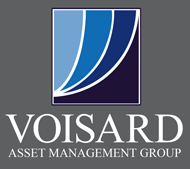The democratization of artificial intelligence is rapidly changing many aspects of our lives, and the world of investing is no exception. With sophisticated AI tools now readily available to individual investors – promising everything from stock predictions to personalized portfolio analysis – a new form of investor overconfidence is emerging. The allure of AI-driven insights can create a dangerous illusion of superior knowledge, leading investors to believe they’ve gained an edge that makes them smarter than the collective wisdom of the market. But is this newfound confidence warranted, or is it a recipe for poor investment decisions?
The Siren Song of AI-Powered Superiority:
Imagine an investor who starts using an AI platform that analyzes vast datasets and spits out seemingly precise buy-and-sell recommendations. Impressed by the technology’s capabilities and perhaps witnessing a few early successful trades (which could easily be attributed to market luck), this investor might develop an inflated sense of their investment prowess. They might think:
- “This AI sees patterns others miss. I now have access to insights the average investor doesn’t.”
- “Traditional financial advisors are outdated. This AI gives me a direct line to market intelligence.”
- “I can now time the market more effectively because this AI’s predictions are so accurate.”
This newfound (and often misplaced) confidence can lead to a range of detrimental behaviors:
- Ignoring Fundamental Analysis: Relying too heavily on AI-generated signals might cause investors to neglect crucial fundamental analysis of companies, such as their financials, competitive landscape, and long-term strategy. They might blindly follow AI recommendations without understanding the “why” behind them.
- Over-Trading: The ease with which AI tools can generate trading signals might encourage excessive trading. Believing they have a superior system, investors might jump in and out of positions frequently, leading to higher transaction costs and potentially missing out on long-term growth.
- Increased Risk-Taking: An inflated sense of knowledge can lead to investors taking on more risk than they would otherwise be comfortable with. They might invest heavily in volatile assets or use complex strategies based solely on AI’s output, without fully understanding the potential downsides.
- Ignoring Traditional Advice: The belief in AI’s superior intelligence might cause investors to disregard the advice of human financial professionals who offer a more holistic and nuanced perspective, considering individual circumstances and behavioral biases.
- Confirmation Bias on Steroids: Investors might selectively seek out AI tools or interpret AI outputs in a way that confirms their existing beliefs, further reinforcing their overconfidence and potentially leading them down the wrong path.
- The “Black Box” Problem: Many AI algorithms operate as “black boxes,” making it difficult to understand the reasoning behind their recommendations. Investors who blindly follow these recommendations without understanding their limitations or potential biases are essentially relinquishing control and critical thinking.
The Reality Check: AI as a Tool, Not a Crystal Ball:
It’s crucial to understand that while AI is a powerful tool for analyzing data and identifying patterns, it is not infallible and cannot predict the future with certainty. Markets are driven by a complex interplay of factors, including human behavior, unforeseen events, and evolving economic conditions – elements that AI can analyze but not perfectly foresee.
Furthermore, the “intelligence” of AI is based on the data it is trained on. If that data contains biases or reflects past market anomalies, the AI’s output will be similarly flawed. Relying solely on AI to make investment decisions without critical evaluation and a solid understanding of investment principles is akin to navigating without a map, simply trusting the readings of a potentially miscalibrated compass.
A Smarter Approach: Human Insight Paired with AI Power:
The most effective approach to investing in the age of AI is not to see it as a replacement for human intelligence and experience, but rather as a powerful augmentation. Investors should:
- Use AI as a research tool: Leverage its ability to analyze large datasets and identify potential areas for further investigation.
- Maintain a strong understanding of fundamental investing principles.
- Apply critical thinking and skepticism to AI-generated recommendations.
- Consider their individual financial goals, risk tolerance, and time horizon.
- Work with a qualified financial advisor who can provide personalized guidance and help navigate the complexities of both traditional and AI-driven investment strategies.
In Conclusion:
The rise of AI in investing presents exciting opportunities, but it also carries the risk of fostering a dangerous sense of overconfidence. Believing that AI makes you inherently “smarter” than the market can lead to the abandonment of sound investment principles and ultimately result in poor financial outcomes. A truly intelligent investor understands the power and limitations of AI, using it as a valuable tool while retaining their own critical judgment and seeking holistic financial advice.

